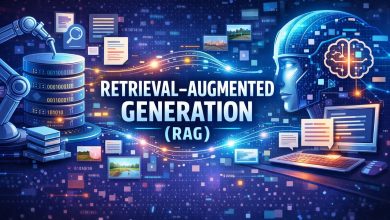
2025 is clearly the year of agentic AI. The current tech landscape is awash with AI Agents touting flashy promises – but many are just glorified co-pilots or large language models (LLMs) in disguise. While the global market size for agentic AI is expected to reach over $139 billion by 2033, it’s no secret that today, AI Agents are often met with polarized debate and internal fears around implementation. Concerns about autonomy, potential for misuse, and the ethical implications of their increasing capabilities have led to both excitement and apprehension about their future role.
As companies try to figure out if or how or where AI Agents might benefit them, many are approaching the issue in very black and white terms: can we use them or not? In reality, there are different levels and types of implementations that fall along a greyscale.
It’s not a one-size-fits-all approach–every business has unique needs, and AI Agents aren’t universal solutions. AI accuracy (and building trust behind what an AI Agent may be doing) is paramount. As business leaders, we must be both optimistic and pragmatic about their capabilities. Rather than following trends blindly, take a hard look at the limitations versus potential of AI Agents today.
Living Up to the Hype
We know the buzz is real, but where are AI Agents overhyped?
AI Agents today can indeed revolutionize workflows and eliminate manual processes–but they are best used in situations that involve clear “right” and “wrong” answers, where they can access robust documentation with clear guardrails and protocols. AI Agents thrive in that kind of environment but currently have much more limited capacities where there are more complex decisions to be made or ambiguous next steps.
Marketing, sales enablement and customer support AI Agents come to mind here. Specifically, as they often end up acting more like chatbots. When AI Agents aren’t granted enough knowledge to be helpful or aren’t bound by clear guardrails, it often leads to frustration and friction.
Another big area many AI Agents are falling short is around authority and trust. Without the necessary tools to check their work and maintain authority, it’s difficult to scale adoption and get buy-in on using them, especially in industries like cybersecurity.
Where AI Agents Excel
AI Agents excel in structured, repetitive tasks that require consistent application of clear rules across large volumes of information. From document processing and information retrieval to pattern recognition, they can process massive amounts of information at a time and utilize millions of previous interactions to get the job done accurately while finding patterns that humans might miss.
Information security is a great space for this kind of work. AI Agents can deeply impact monitoring and detection, proactive security, and security reviews. They can continuously analyze patterns, predict risks, and improve detection and response capabilities over time. Additionally, AI Agents are incredibly powerful at streamlining security review processes.
They autonomously handle tasks such as questionnaire responses and notifying team members when human intervention is needed. This means tasks that previously took 2-4 weeks and manual work from multiple employees can be flipped into a near-instant turnaround. By removing these bottlenecks, organizations can optimize security workflows while improving accuracy.
However, to maximize the potential of AI Agents, we must not only look at what task is being completed but how it is being completed. Accuracy is everything for scaling agentic AI – it develops trust and directly correlates to successful adoption in organizations.
Measurable Quality Drives Trust
Accuracy is ultimately a quality measure. And only with high accuracy can vendors earn the right for more sophisticated AI Agent autonomy. Certain disciplines – like information security are not persuasion-based tasks, but are instead fact-based tasks. This allows MECE quality statistics such as perfect answers, tweaked answers, incorrect answers, and unanswered answers.
Leading companies with AI Agent deployments are monitoring AI accuracy statistics at granular levels over time. And because every answer is sourced and cited in the company’s Knowledge graph, hallucination rates are under 0.01%. The next hard quality challenge after raw response accuracy is auditing an AI Agent’s autonomous output.
AI Agents do not rigidly follow predetermined steps. Instead they operate within clearly defined boundaries or company policies. AI Agents deployments that see the highest adoption earn trust by showing, the reasoning of the problem they are interacting with, the steps they would take, and the systems they would engage with.
This transparency is crucial for effective AI Agents that work in partnership with humans who oversee their performance. In fact, of the 450+ AI Agents publicly available today, less than 1% have the capacity to measure, monitor, and report on AI accuracy. This highlights the importance of careful implementation and thoughtful oversight to ensure success.
Best Practices for Adoption
Resistance to AI adoption is normal, in fact, Pew Research Center just reported that about half of workers (52%) say they’re worried about the future impact of AI use in the workplace. By laying a foundation of accuracy and transparency, we can take small steps to reduce friction and optimize workflows.
To reduce the perceived risk of AI adoption, consider a phased rollout. Remember the greyscale? This allows organizations to see how Agents work in real applications. Starting with smaller scale, more easily automated workflows and adapting overtime.
When considering the security landscape, we see opportunities for agentic AI across the entire customer security review process. From secure document sharing to generating instant answers to security questionnaires and RFPs, organizations can see rapid improvements. However, it doesn’t all need to be implemented all at once.
Incremental progress is still progress. As AI Agents continue to mature, remember to embrace a nuanced strategy rather than making all-or-nothing decisions. Success lies in identifying the right use cases to deliver true value while maintaining quality assurance and transparency to build trust. AI Agents can be true teammates with skills to deliver full outcomes… and the future of our team excites me.





